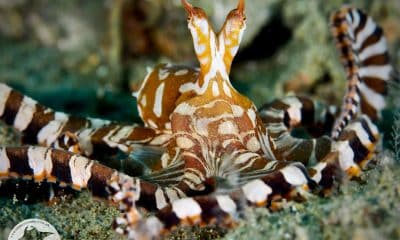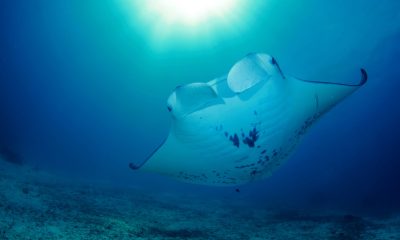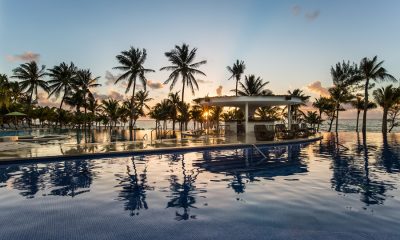News
Komodo: the underwater laboratory
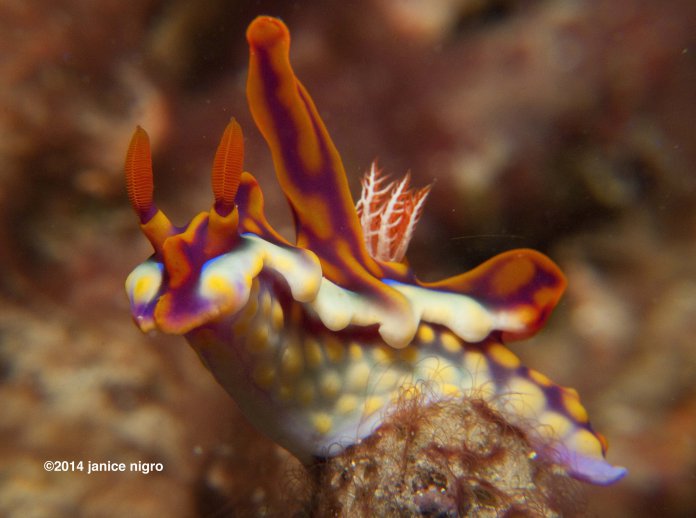
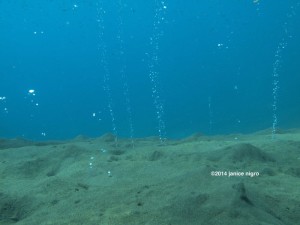 Volcanic gas bubbles were percolating from the sandy bottom below me. Yellow particles of sulfur that had precipitated out of these gases from Sangeang Volcano, dusted the perfectly black sand, and the sand was warm to the touch. I thought, it is a good thing that I have my underwater “safety goggles” on, as it was my first sense that in the sea in Komodo a delicate (or perhaps explosive) experiment was still in progress. There in front of me I felt like I had an eyewitness view below the surface of the ocean to the basic ingredients necessary to cook-up life.
Volcanic gas bubbles were percolating from the sandy bottom below me. Yellow particles of sulfur that had precipitated out of these gases from Sangeang Volcano, dusted the perfectly black sand, and the sand was warm to the touch. I thought, it is a good thing that I have my underwater “safety goggles” on, as it was my first sense that in the sea in Komodo a delicate (or perhaps explosive) experiment was still in progress. There in front of me I felt like I had an eyewitness view below the surface of the ocean to the basic ingredients necessary to cook-up life.
Komodo lies in Indonesia within the Coral Triangle, where the richest biodiversity in marine life resides. However, Komodo probably made an unforgettable first impression on me, like most kids growing up in the Midwest, through the images of a land animal, the Komodo dragon. I could not have imagined then, mesmerized in front of the TV, that it would be through scuba diving that I would get there.
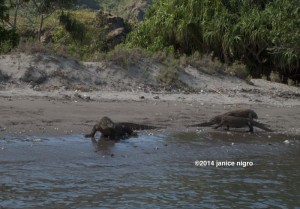 As a dive destination, Komodo is known for its swift currents and cool thermoclines. Based on these characteristics, I was somewhat reluctant to dive Komodo. Furthermore, reading about diver mishaps in Komodo, which is easy to do because of the Internet, did not settle the issue. A culmination of a diver’s worst nightmare in Komodo was actually a true story: divers had been both swept away and had to fight off Komodo dragons after finding refuge on an island. I am not in for that much adventure (or effort), but what I discovered, is that divers in Komodo who are most vulnerable to these incidents are the ones from liveaboards without dedicated boat tenders. I decided then that for my Komodo experience, I would take the Seven Seas, a big boat, with an attentive crew, that is well known for establishing underwater exploration of the area as a dive destination.
As a dive destination, Komodo is known for its swift currents and cool thermoclines. Based on these characteristics, I was somewhat reluctant to dive Komodo. Furthermore, reading about diver mishaps in Komodo, which is easy to do because of the Internet, did not settle the issue. A culmination of a diver’s worst nightmare in Komodo was actually a true story: divers had been both swept away and had to fight off Komodo dragons after finding refuge on an island. I am not in for that much adventure (or effort), but what I discovered, is that divers in Komodo who are most vulnerable to these incidents are the ones from liveaboards without dedicated boat tenders. I decided then that for my Komodo experience, I would take the Seven Seas, a big boat, with an attentive crew, that is well known for establishing underwater exploration of the area as a dive destination.
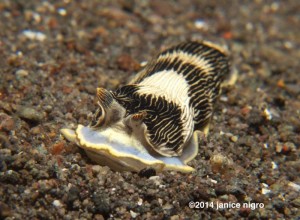 Komodo, like most of Indonesia, is a string of islands created by volcanic eruptions. To dive Sangeang early in the itinerary was a prelude to the park not only because it is a volcano, but because it also seems to set time back to the beginning. It is particularly fascinating to me as a diver, as there is a combination of geological, geographical as well as biological phenomena to experience. Smoke plumes surround the peak of Sangeang, but that it is active, is more easily viewed on the sea floor at dive sites like the one described above, Tiny Bubbles. It is an ethereal place, dark because of the black rock, but clearly rich with nutrients for the plethora of vibrantly colored soft corals growing like wall hangings from the blocks of volcanic basalt. It has the feeling of an underwater burn area where soft and whip corals flourish as do wild flowers after the spring rains following a fire. Nudibranchs are prolific here, as is macro life in general. The dive guides found a big-bellied red Bargi Banti pygmy sea horse, a tomezuma shrimp, and a xenocrab.
Komodo, like most of Indonesia, is a string of islands created by volcanic eruptions. To dive Sangeang early in the itinerary was a prelude to the park not only because it is a volcano, but because it also seems to set time back to the beginning. It is particularly fascinating to me as a diver, as there is a combination of geological, geographical as well as biological phenomena to experience. Smoke plumes surround the peak of Sangeang, but that it is active, is more easily viewed on the sea floor at dive sites like the one described above, Tiny Bubbles. It is an ethereal place, dark because of the black rock, but clearly rich with nutrients for the plethora of vibrantly colored soft corals growing like wall hangings from the blocks of volcanic basalt. It has the feeling of an underwater burn area where soft and whip corals flourish as do wild flowers after the spring rains following a fire. Nudibranchs are prolific here, as is macro life in general. The dive guides found a big-bellied red Bargi Banti pygmy sea horse, a tomezuma shrimp, and a xenocrab.
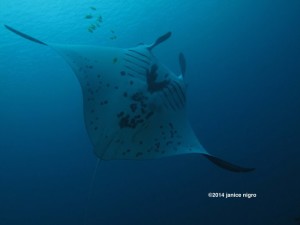 We shifted our eyes from macro to wide angle when we arrived at Manta Alley. Our backward roll was into an amphitheater formed of volcanic rock, and we descended to the sandy bottom at 25 meters where we remained stationary to watch the mantas overhead. The volcanic amphitheater provides a spectacular backdrop for viewing the manta rays, and at times, I forgot that I was there to watch the mantas and not the many sessile creatures that live in these walls as permanent spectators to the graceful pelagic animals. We viewed at least eight different manta rays, and on the second dive, the animals were even friendlier, swimming so close as if wanting to make contact. Afterwards when I asked about how to differentiate between male and female rays (I can’t leave the scientist at home), I learned, instead, that we actually saw the two types of manta rays, oceanic and reef, and that they are distinguishable largely based on patterns of coloration.
We shifted our eyes from macro to wide angle when we arrived at Manta Alley. Our backward roll was into an amphitheater formed of volcanic rock, and we descended to the sandy bottom at 25 meters where we remained stationary to watch the mantas overhead. The volcanic amphitheater provides a spectacular backdrop for viewing the manta rays, and at times, I forgot that I was there to watch the mantas and not the many sessile creatures that live in these walls as permanent spectators to the graceful pelagic animals. We viewed at least eight different manta rays, and on the second dive, the animals were even friendlier, swimming so close as if wanting to make contact. Afterwards when I asked about how to differentiate between male and female rays (I can’t leave the scientist at home), I learned, instead, that we actually saw the two types of manta rays, oceanic and reef, and that they are distinguishable largely based on patterns of coloration.
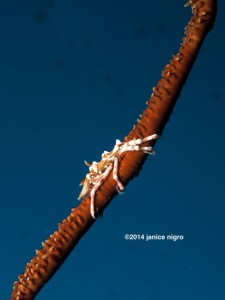 Horseshoe Bay is the dive destination within the heart of Komodo. It harbors a spectacular series of dives within a small area, and at the same time offers the first opportunity to view the infamous Komodo dragon in one of its natural habitats, the beach on Rinca Island. Here, crab eating macaques skip around on the rocky section of the beach collecting the shellfish when the tide is out, while the dragons slink out in public only when the sun is at its peak and the sand at its warmest. The dragons are surprisingly inactive and look more like statues sculpted from the very sand upon which they rest. They only appear to be alive because of their nonstop drool that seems thick enough to tether them to the beach. Fortunately, they do not like to swim so much.
Horseshoe Bay is the dive destination within the heart of Komodo. It harbors a spectacular series of dives within a small area, and at the same time offers the first opportunity to view the infamous Komodo dragon in one of its natural habitats, the beach on Rinca Island. Here, crab eating macaques skip around on the rocky section of the beach collecting the shellfish when the tide is out, while the dragons slink out in public only when the sun is at its peak and the sand at its warmest. The dragons are surprisingly inactive and look more like statues sculpted from the very sand upon which they rest. They only appear to be alive because of their nonstop drool that seems thick enough to tether them to the beach. Fortunately, they do not like to swim so much.
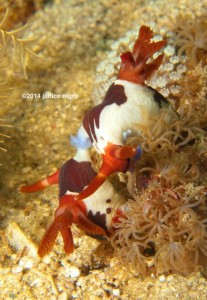 The dives in this area often had a bit of current at the surface, so negative entries were necessary. However, once under the surface, the current was not detectable. Cannibal Rock, named after a behavior of the dragons and not the humans, is a fabulous volcanic peak that you circle but never in a single dive, as it is crowded with soft corals, anemones, mating nudibranchs, frogfish, and shrimp. It is possibly the worse case of ADHD my eyes and I could ever have, because I could not prioritize where to stop and to look. Thankfully, I had the Incredibles, a.k.a. the dive guides from North Sulawesi, to help me sort it out and to identify specific, unique creatures. The Yellow Wall o’ Texas is one of the most extraordinary wall dives on the trip, in that the soft corals are swollen open all day long due to currents even in the bright sunlight. It is a hypnotic ride along a wall of soft corals and anemones rhythmically responding to the current, but macro creatures can be found if there is a break in the flow. I spotted an enormous tambja affinis nudibranch (not exactly macro) and two zebra crabs on a fire urchin glued to the wall.
The dives in this area often had a bit of current at the surface, so negative entries were necessary. However, once under the surface, the current was not detectable. Cannibal Rock, named after a behavior of the dragons and not the humans, is a fabulous volcanic peak that you circle but never in a single dive, as it is crowded with soft corals, anemones, mating nudibranchs, frogfish, and shrimp. It is possibly the worse case of ADHD my eyes and I could ever have, because I could not prioritize where to stop and to look. Thankfully, I had the Incredibles, a.k.a. the dive guides from North Sulawesi, to help me sort it out and to identify specific, unique creatures. The Yellow Wall o’ Texas is one of the most extraordinary wall dives on the trip, in that the soft corals are swollen open all day long due to currents even in the bright sunlight. It is a hypnotic ride along a wall of soft corals and anemones rhythmically responding to the current, but macro creatures can be found if there is a break in the flow. I spotted an enormous tambja affinis nudibranch (not exactly macro) and two zebra crabs on a fire urchin glued to the wall.
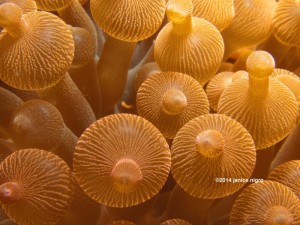 Eventually a dive comes along where I had to pay for all of the delicious desserts eaten on a 12-day liveaboard. The Three Sisters was finally that dive. The Three Sisters is a dive site of three underwater pinnacles that become progressively higher and are separated by several meters. The current was flowing into one side of the pinnacles so that the burn came at the entry just downstream of the current and in between them where the current ran through. On the entry, I refused to let my male dive guide get away from me so I kicked and kicked until I reached the other side of the ridge, stopped to breathe for a few minutes, and then proceeded.
Eventually a dive comes along where I had to pay for all of the delicious desserts eaten on a 12-day liveaboard. The Three Sisters was finally that dive. The Three Sisters is a dive site of three underwater pinnacles that become progressively higher and are separated by several meters. The current was flowing into one side of the pinnacles so that the burn came at the entry just downstream of the current and in between them where the current ran through. On the entry, I refused to let my male dive guide get away from me so I kicked and kicked until I reached the other side of the ridge, stopped to breathe for a few minutes, and then proceeded.
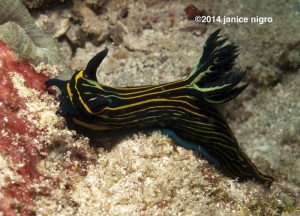 We were searching for the so-called chocolate crunchy peanut sea star (scientific name unknown), a species of starfish reportedly identified by the Seven Seas at this site, but instead found a giant yellow frogfish on the third sister and three orangutan crabs crowded on a single bubble coral on the sea floor. The highlight was a sort of underwater interracial couple, a trumpetfish closely lingering over a pufferfish. This behavior trick of the trumpetfish was not new to me. The trumpetfish hovers over the pufferfish just out of sight and is able to snatch unsuspecting fish that are normally at ease in the presence of the pufferfish. The pair really appeared to be more attentive to each other, like a romantic couple, rather than a devious trumpetfish camouflaged by a puffer. Rita, one of the other guests, even predicted the possible variations of their offspring if their real purpose was to mate. A spiny trumpetfish? A long snouted, yellow puffer?
We were searching for the so-called chocolate crunchy peanut sea star (scientific name unknown), a species of starfish reportedly identified by the Seven Seas at this site, but instead found a giant yellow frogfish on the third sister and three orangutan crabs crowded on a single bubble coral on the sea floor. The highlight was a sort of underwater interracial couple, a trumpetfish closely lingering over a pufferfish. This behavior trick of the trumpetfish was not new to me. The trumpetfish hovers over the pufferfish just out of sight and is able to snatch unsuspecting fish that are normally at ease in the presence of the pufferfish. The pair really appeared to be more attentive to each other, like a romantic couple, rather than a devious trumpetfish camouflaged by a puffer. Rita, one of the other guests, even predicted the possible variations of their offspring if their real purpose was to mate. A spiny trumpetfish? A long snouted, yellow puffer?
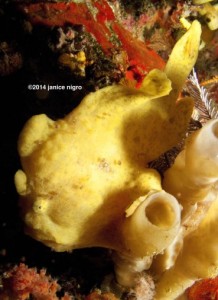 There were “sand-based” breaks from the boat. A very serious beach volleyball match took place between the crew, guests, and locals from an island that I can only report is somewhere. It was an unpredicted event in life. An easy hike to Pink Beach on another island to watch the sunset emphasized the remarkable diversity of the landscape of Komodo. The pink sand on this beach is created by the fragmentation of red coral.
There were “sand-based” breaks from the boat. A very serious beach volleyball match took place between the crew, guests, and locals from an island that I can only report is somewhere. It was an unpredicted event in life. An easy hike to Pink Beach on another island to watch the sunset emphasized the remarkable diversity of the landscape of Komodo. The pink sand on this beach is created by the fragmentation of red coral.
Beauty is flaunting itself everywhere in Komodo, but it lies deep within the muck dives if you are open to the challenge of finding it. I have noticed all too often divers surfacing before their 60 minutes are up in exasperation because muck dive sites are not “pretty”. To me, there is something compelling about these dives even though they at first may appear to be desolate. The dive guides always find something, so I take on these dives as a personal challenge to hunt as they do and persevere until the end of the 60 minutes as if I might find something awesome too! An easy afternoon muck dive at Wainilu proved exactly this point. For about the first 30 minutes of this dive, I felt as if I was immersed in a black and white photo, as there was low visibility and little sunlight. And then finally, a radiant spot of color, a yellow-ridged ceratosoma, appeared on the coral rubble. More nudibranchs came after that, including a huge, lumbering solar powered phyllodesmium longicirrum. Finally, our dive guide, digging through the coral rubble, uncovered a spiny tiger shrimp, one that I could actually see without a magnifying glass.
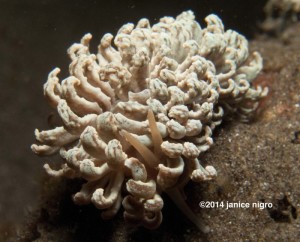 That feeling that a dinosaur would appear at any moment followed me throughout the trip, but it was especially on the night dives that I felt totally immersed in the primordial soup that is Komodo. Coral Garden is a name that sounds innocuous enough, but it was here that tiny bioluminescent beings hurled themselves at us at night. No one had a name for these creatures pulsating orange light, but I was clearly not the only one seeing them. At Torpedo Point in Horseshow Bay, I finally made a find that even the dive guide envied. Just as I reached the bottom, my flashlight beam caught a juvenile ornate ghost pipefish bouncing vertically over the sand as if its nose were too heavy. Our Incredible for the night dive quickly evened the score by finding the parent to the juvenile and then essentially outscored us by making torpedo rays appear out of the sand, revealing hidden shrimp in basket sea stars, and coercing delicate crabs out of their soft coral hideouts. Evolution seems to have a complete lack of any rational purpose when you evaluate the diversity of the creatures on these night dives.
That feeling that a dinosaur would appear at any moment followed me throughout the trip, but it was especially on the night dives that I felt totally immersed in the primordial soup that is Komodo. Coral Garden is a name that sounds innocuous enough, but it was here that tiny bioluminescent beings hurled themselves at us at night. No one had a name for these creatures pulsating orange light, but I was clearly not the only one seeing them. At Torpedo Point in Horseshow Bay, I finally made a find that even the dive guide envied. Just as I reached the bottom, my flashlight beam caught a juvenile ornate ghost pipefish bouncing vertically over the sand as if its nose were too heavy. Our Incredible for the night dive quickly evened the score by finding the parent to the juvenile and then essentially outscored us by making torpedo rays appear out of the sand, revealing hidden shrimp in basket sea stars, and coercing delicate crabs out of their soft coral hideouts. Evolution seems to have a complete lack of any rational purpose when you evaluate the diversity of the creatures on these night dives.
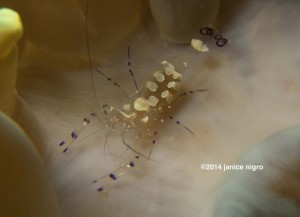 And at the end of a night dive, you surface under an unadulterated spectacle of the stars. In a place like Komodo, where there is no interference from man-made light, I could use even a weak flashlight, point to a star, and feel as if the beam of light reaches all the way into outer space and actually touches it. It occurred to me then that the magical life of Komodo might be created by some sort of a chemical reaction requiring the components of seawater and volcanoes and is ignited by sun-, star-, and moonlight.
And at the end of a night dive, you surface under an unadulterated spectacle of the stars. In a place like Komodo, where there is no interference from man-made light, I could use even a weak flashlight, point to a star, and feel as if the beam of light reaches all the way into outer space and actually touches it. It occurred to me then that the magical life of Komodo might be created by some sort of a chemical reaction requiring the components of seawater and volcanoes and is ignited by sun-, star-, and moonlight.
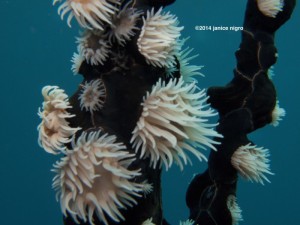 We were once again anchored in the harbor of Labuan Bajo, and Komodo and Rinca, Sangeang and Sumbawa were all new “is this even on Google maps” destinations that I had traveled to. Only the domestic flight remained. We had news that there had been an incident two days before where a cow wandered inadvertently in front of a jet that had just landed at the airport (the unpredictable). While no one was hurt, the plane was damaged, and this meant a delay as the airlines was catching up for the lack of flights on the two previous days. Considering these circumstances, I was, of course, anxious about the flight, but as we finally safely left the ground, I was more anxious about leaving Komodo and not ever returning.
We were once again anchored in the harbor of Labuan Bajo, and Komodo and Rinca, Sangeang and Sumbawa were all new “is this even on Google maps” destinations that I had traveled to. Only the domestic flight remained. We had news that there had been an incident two days before where a cow wandered inadvertently in front of a jet that had just landed at the airport (the unpredictable). While no one was hurt, the plane was damaged, and this meant a delay as the airlines was catching up for the lack of flights on the two previous days. Considering these circumstances, I was, of course, anxious about the flight, but as we finally safely left the ground, I was more anxious about leaving Komodo and not ever returning.
Blogs
TRAVEL BLOG: Jeff Goodman Dives SOMABAY, Part 3

Today we are diving one of the outer reefs from an inflatable. As we reach the bottom, a reef octopus eases its way into the cover of a small crack in the coral while displaying it’s incredible ability to change colour. They are arguably one of the most charismatic of reef dwellers and it is always exciting for me to simply hover and watch. I would have spent longer and waited for it to come and investigate me, but as dive time is limited we wanted to move on and find a turtle.
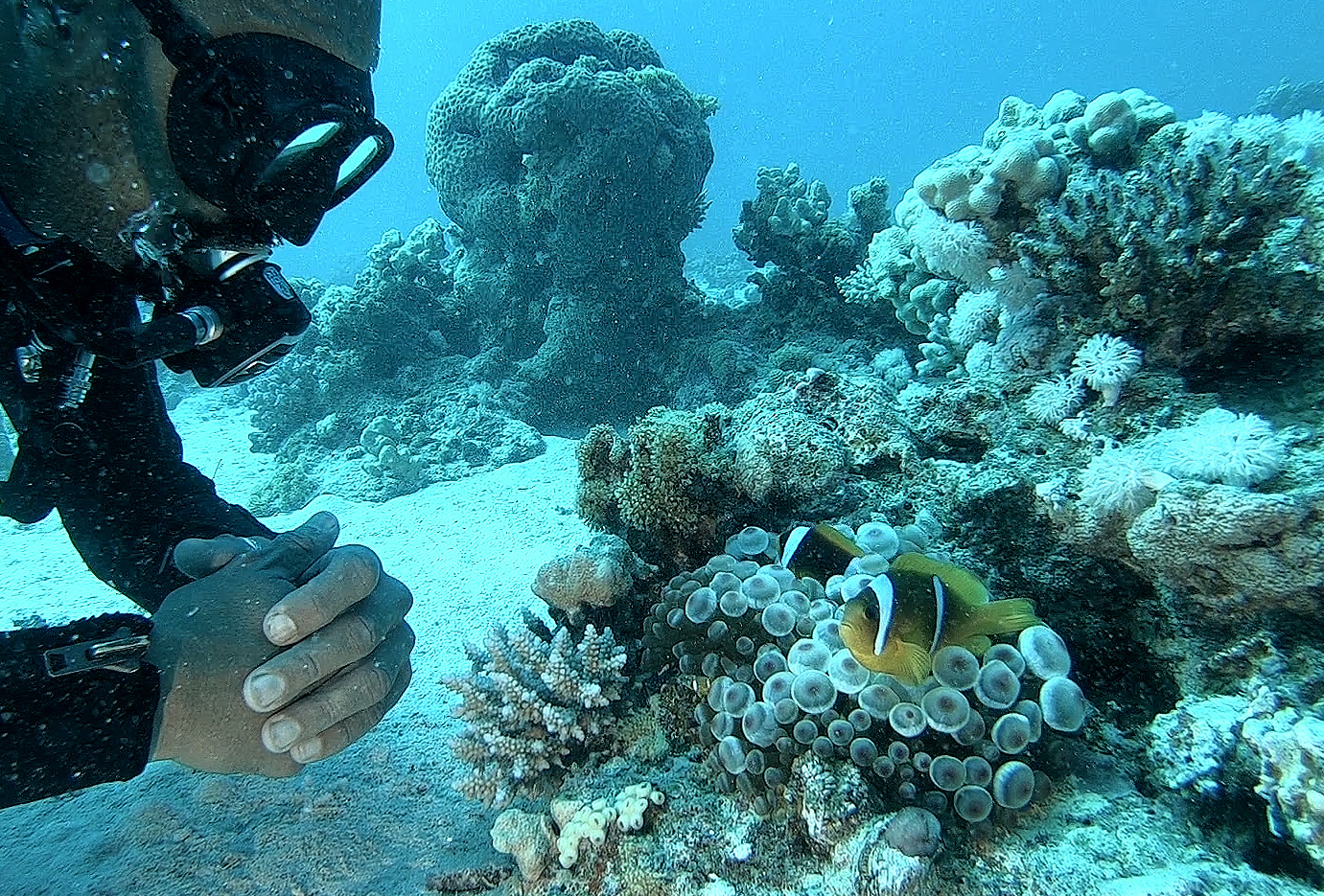
The waters around Somabay are well protected and hold a rich variety of marine life. The reef edges are thriving colonies of coral and shoaling fish, while nearer the sea bed plenty of wildlife is still to be found.
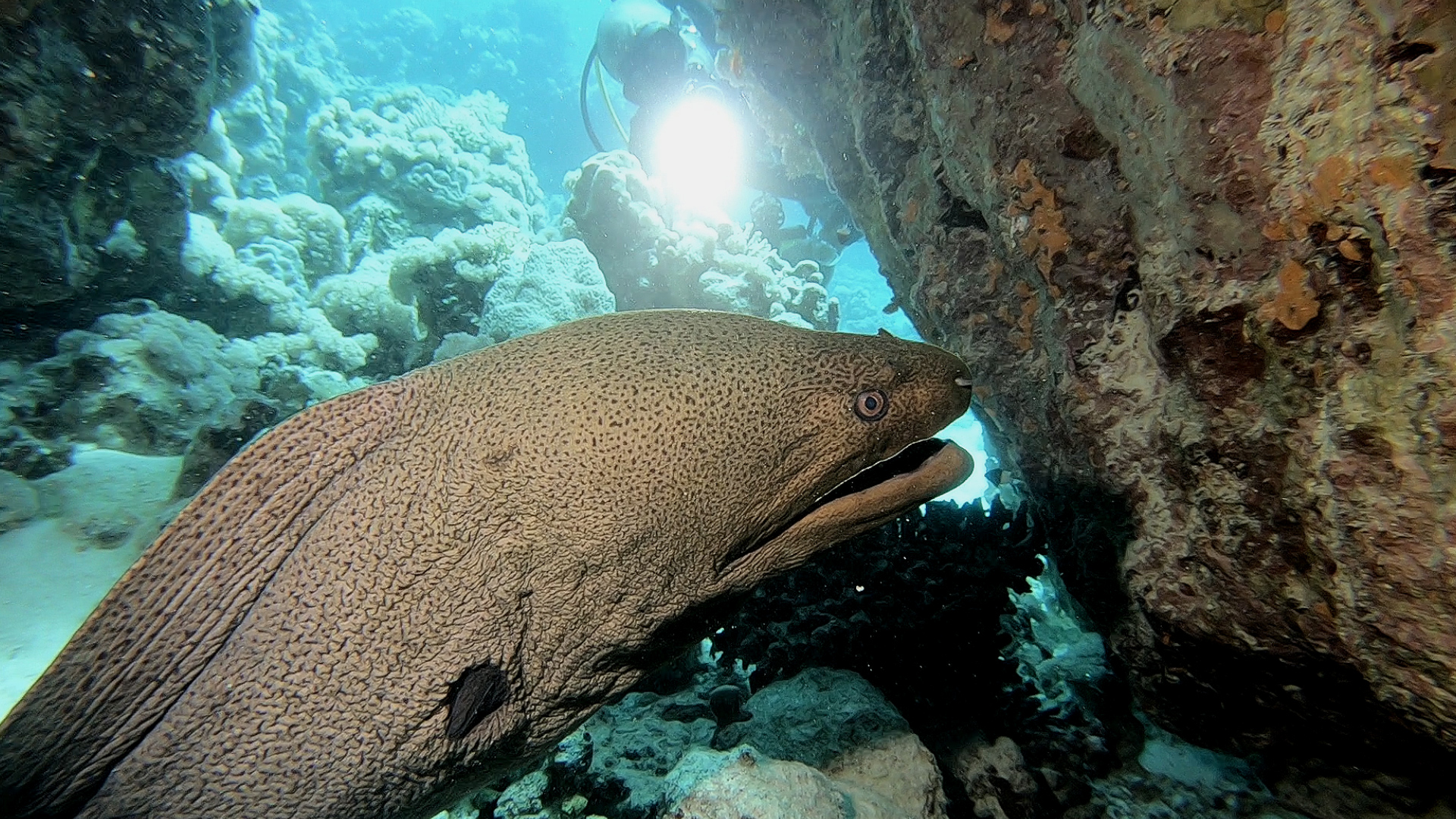
Then we located the turtles. They are very used to divers and so show little concern when slowly approached. In fact occasionally one will come over to see what you are doing. There is always huge excitement when diving with a turtle. The shear thrill of sharing a moment with another species.
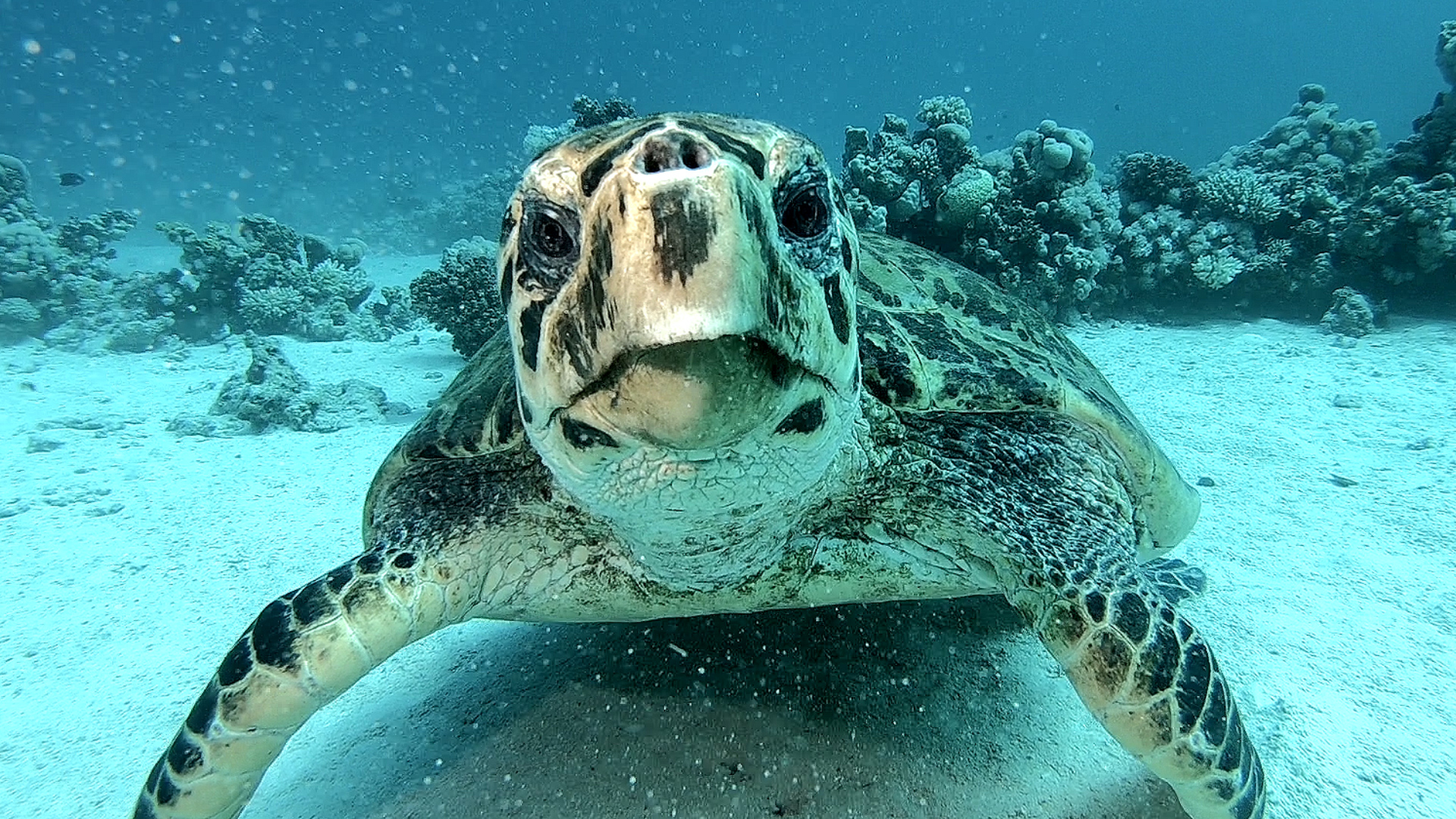
What a fantastic way to finish a wonderful few days diving and I would like to thank SOMABAY, ORCA DIVING and THE BREAKERS for making my stay such a good one.
I had a great time, with diving everyday either on the house reef or on one of the offshore reefs by inflatable or larger day boat. Orca diving provided high quality equipment and facilities while the staff were all very friendly and welcoming. The Breakers was right on the coast with nice rooms, good food and once again friendly staff making the whole trip a real pleasure.
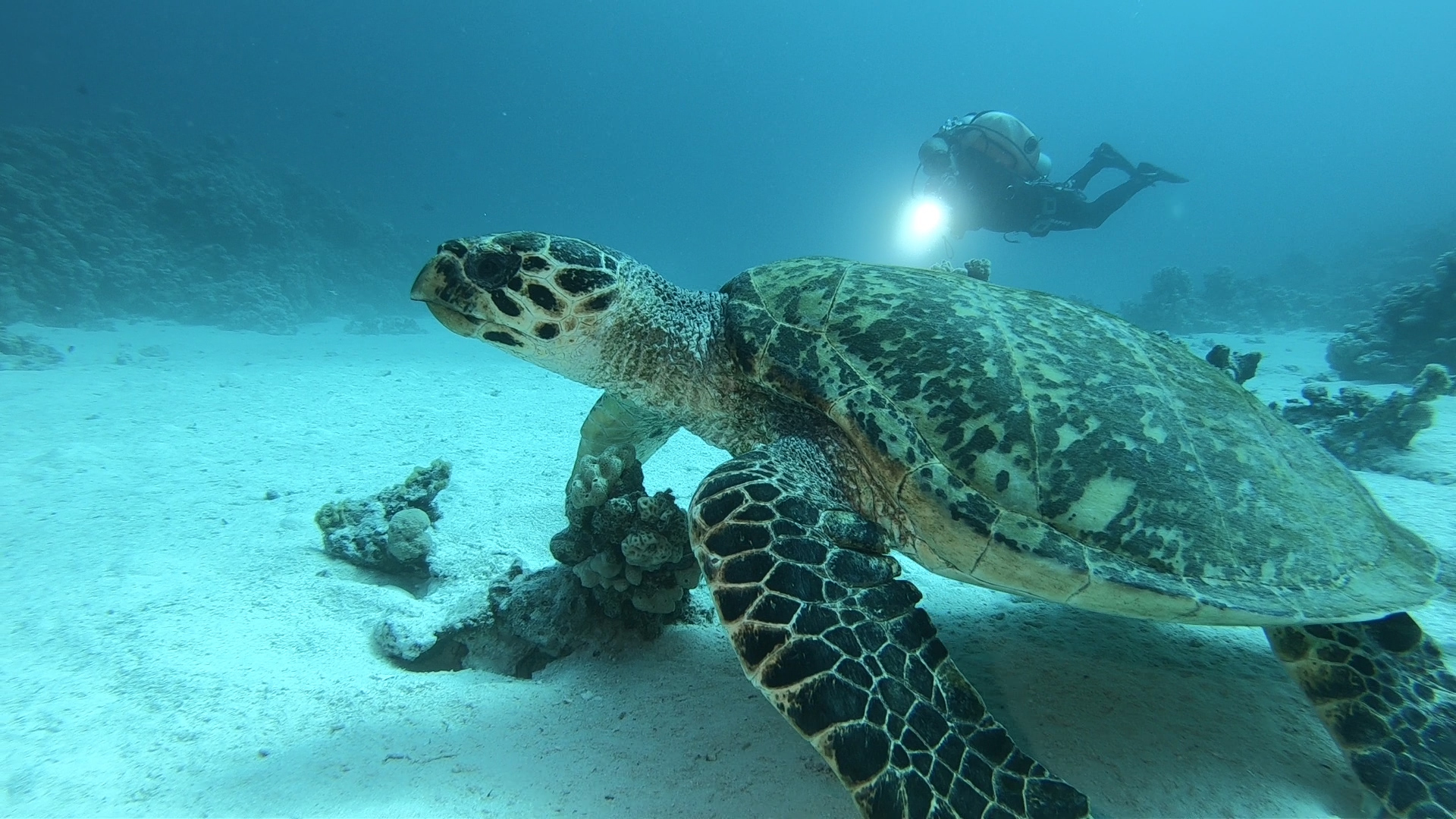
Soma Bay covers an entire peninsula and is home to several resorts as well as residential compounds.
As well as scuba diving, Somabay caters for many other sports and activities, and so is perfect for families as well as individuals and/or groups. And of course there is always time to lay peacefully on the beach under the Egyptian sun.
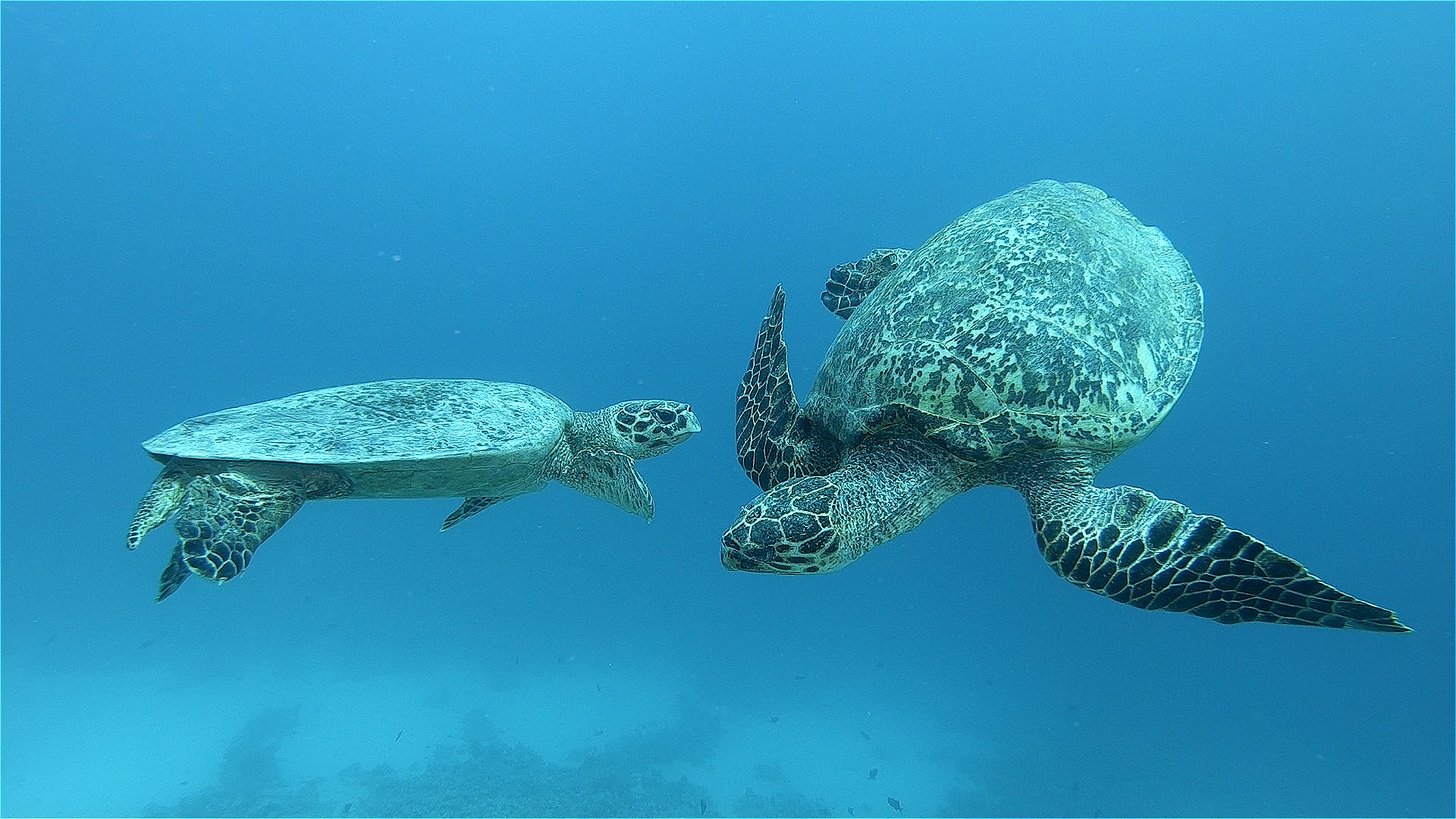
Book your next Red Sea dive adventure with SOMABAY! For more information, visit www.somabay.com.
Stay at the Breakers Diving & Surfing Lodge when you visit! For more information, visit www.thebreakers-somabay.com.
Find out more about ORCA Dive Clubs at SOMABAY at www.orca-diveclubs.com/en/soma-bay-en.
Blogs
TRAVEL BLOG: Jeff Goodman Dives SOMABAY, Part 2

Day three of my trip to Somabay and we were spending the day on the Lady Christina and diving on the wreck of the Salem Express.
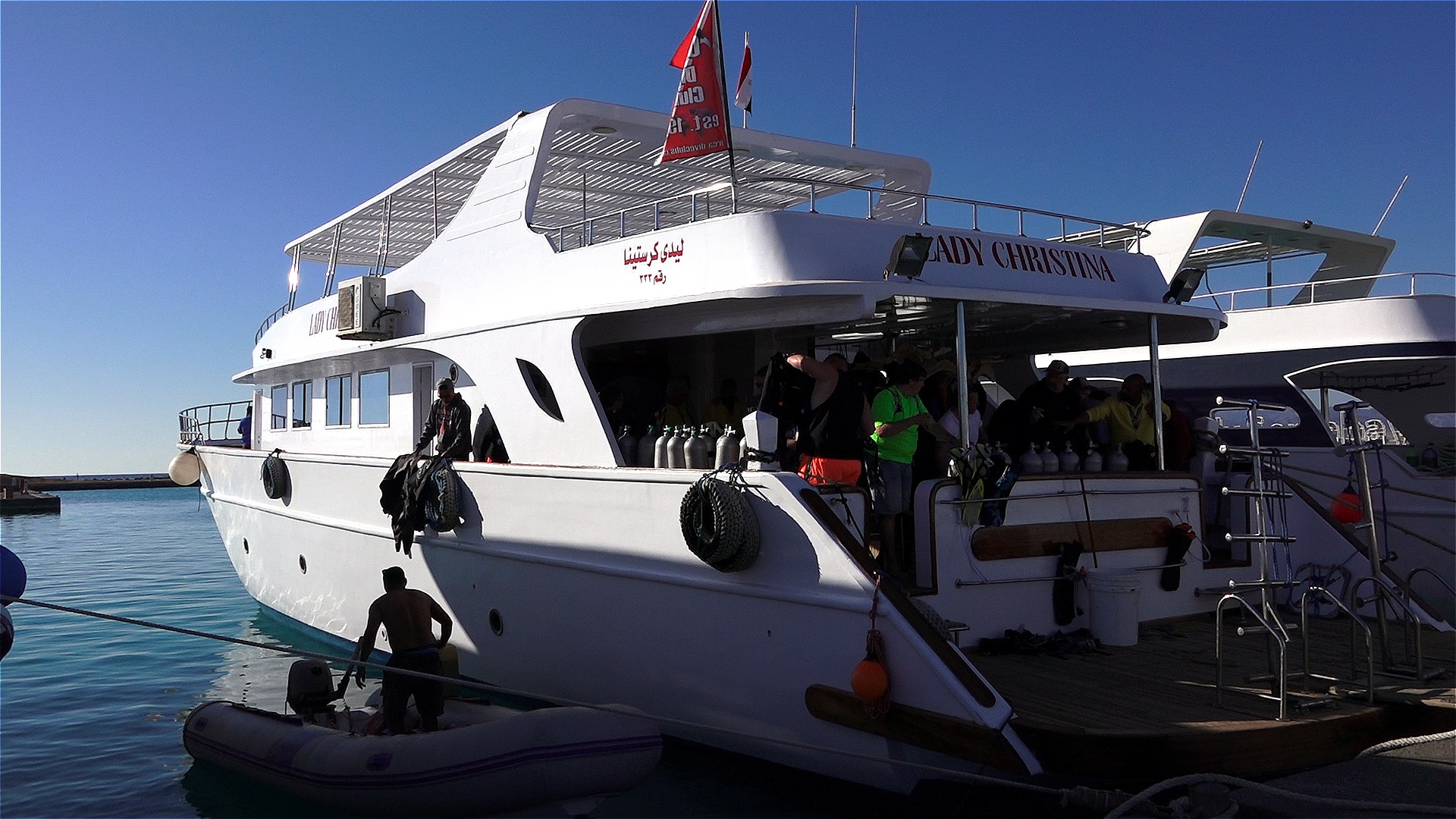
Diving wrecks for me is always one of mixed emotions. The excitement of diving a wreck is more than often tempered by the thought of loss of life when she sank. The Salem Express was a passenger ship and a roll-on/roll-off ferry travelling from Jeddah, Saudi Arabia to Safaga, Egypt. Most passengers were of poor class travelling home from their holidays while around 150 people were returning home from their pilgrimage to Mecca.

The ship struck a reef and sank within 20 minutes. Passengers were trapped below deck and the ship was filled with fear and panic.

The wreck area is strewn with personal belongings from the crew and passengers such as a transistor radio and a flat iron for clothes. A diver at sometime has put them in a prominent place to be seen.

Tragically only one life boat was launched while the others went down with the ship. More than 600 men, women and children lost their lives here.

It’s a stark reminder that the sea can be unforgiving and so when we dive on such wrecks we should do so with humble regard.
Returning to the surface, shoals of fish are gathered under our boat and seem to be welcoming us back into the light.
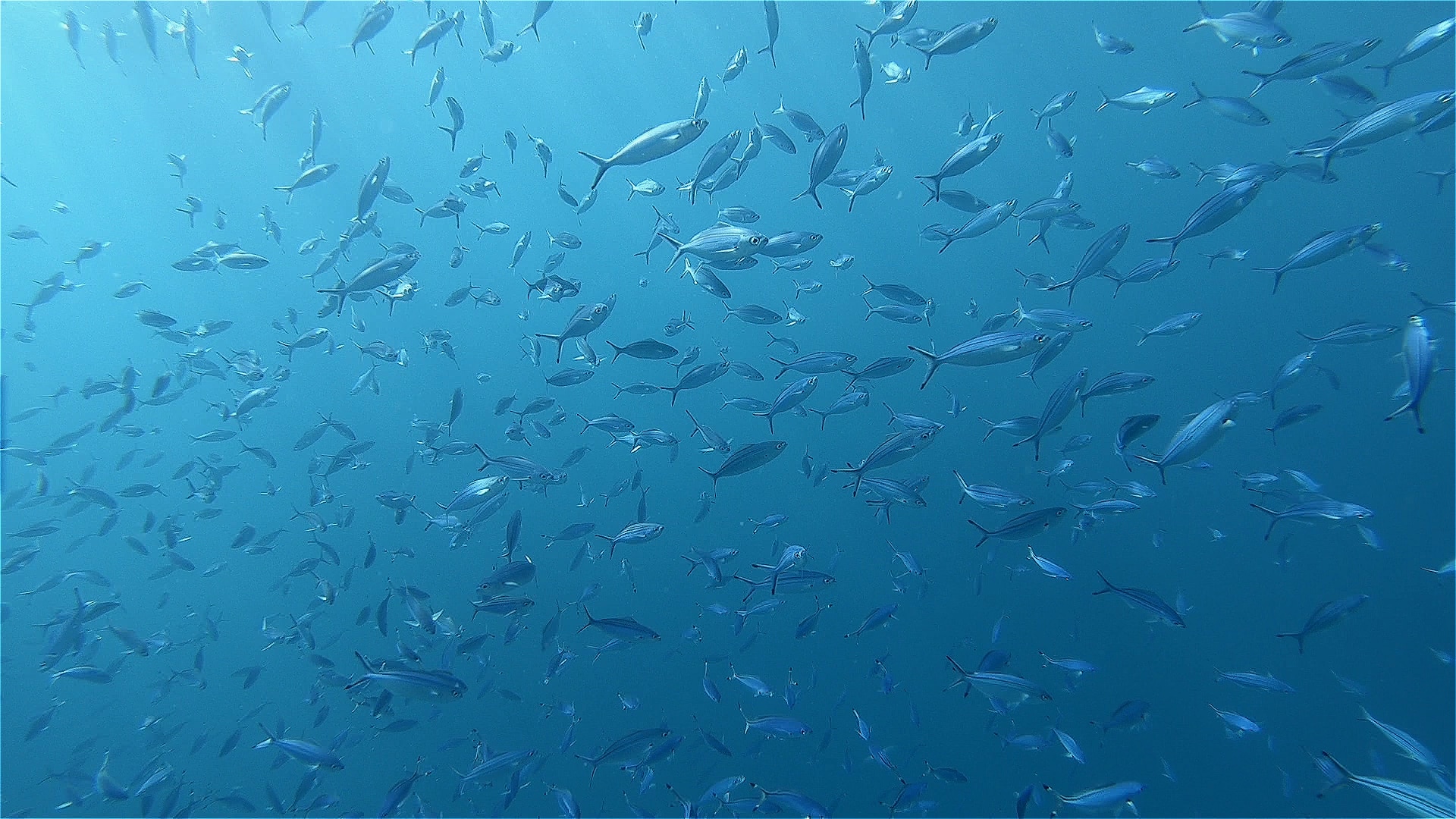
Back at the Breakers I sat in the dining area with a beer and a very good meal while my thoughts still remained with the day’s dive on the Salem Express.
Check in for part 3 tomorrow for Jeff’s last day of diving with Somabay on the off-shore reefs looking for turtles.
Book your next Red Sea dive adventure with SOMABAY! For more information, visit www.somabay.com.
Stay at the Breakers Diving & Surfing Lodge when you visit! For more information, visit www.thebreakers-somabay.com.
Find out more about ORCA Dive Clubs at SOMABAY at www.orca-diveclubs.com/en/soma-bay-en.
-

 News3 months ago
News3 months agoHone your underwater photography skills with Alphamarine Photography at Red Sea Diving Safari in March
-

 News2 months ago
News2 months agoCapturing Critters in Lembeh Underwater Photography Workshop 2024: Event Roundup
-

 Marine Life & Conservation Blogs2 months ago
Marine Life & Conservation Blogs2 months agoCreature Feature: Swell Sharks
-

 Blogs1 month ago
Blogs1 month agoMurex Resorts: Passport to Paradise!
-

 Gear News3 months ago
Gear News3 months agoBare X-Mission Drysuit: Ideal for Both Technical and Recreational Divers
-

 Blogs2 months ago
Blogs2 months agoDiver Discovering Whale Skeletons Beneath Ice Judged World’s Best Underwater Photograph
-

 Gear Reviews2 months ago
Gear Reviews2 months agoGear Review: Oceanic+ Dive Housing for iPhone
-
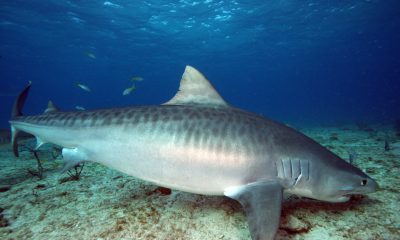
 Blogs3 months ago
Blogs3 months agoThe Thrilling Encounter with Tiger Sharks at Beqa Lagoon’s ‘The Colosseum’ with Coral Coast Divers





